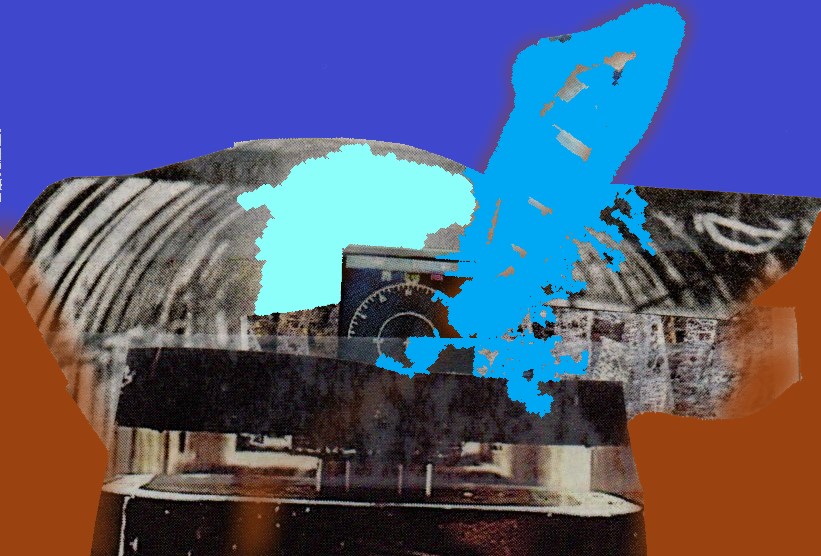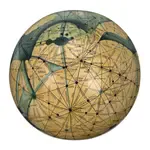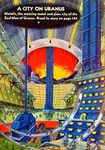a brief history of ooranye
16: the institutes of fate
[continued from 15: The Age of Spies]
 "teleohardware" in action on a summit cone
"teleohardware" in action on a summit coneThe Zirconium and Niobium Eras (40 and 41) were the golden age of the Teleological Guilds, the like of which cannot be found in Earth history.
Their origin lies back in the Cobalt Era, but not much is known of them before Era 40. They seem to have begun as secret societies rather than as public bodies. Perhaps the mystery and the secrecy were never intentional, but forced upon them, by their special concerns which were way over most people’s heads.
Partly, the Guilds were research institutions; partly they were exploration societies; partly – for a time – political clubs, even nations. Their stated purpose was to discover the trends of history. To know the direction in which Uranian Man was heading would help to steer the species though the rocks and rapids that might lie in wait in the eras ahead. But the Guilds’ methods of research make it hard to enforce scientific rigour on the published results.
The Zirconium Era lasted 3,155,594 U-days, or 128.6 U-years – equivalent to 10,799 Earth years. The Guilds built fine conical buildings for their headquarters. These almost rivalled the cities for splendour. (Coincidentally or not, the famous mobile city Yr, City of Mists, was built and launched in this era.) One of the Guilds allowed power to go to its collective head: it unleashed an actual war, merely to promulgate its own view of history. Its defeat led to the eomasp which ushered in the calmer Niobium Era.
This, Era 41, lasted 6,662,243 U-days, or 271.4 U-years – equivalent to 22,800 Earth years. During this time the guilds (the word henceforth written with a small “g” by translators) were generally calmer and more responsible than they had been during the Zirconium. It was a great age for elegance in architecture, city planning and the design of skyships.
Accumulated wealth from a long period of peace led to some exploration using the rare, expensive techniques of matter-transmission, make possible by equipment left over from the Phosphorus Era and rarely used since then.
The Teleological Guilds, for all their wealth and social importance, contributed remarkably little to the sum of human knowledge. Their chosen field of investigation was almost impossible to master, and gradually they lost their original purpose and became societies to promote exploration and more mundane knowledge. Finally, during the last few hundred thousand days of Era 41, they dwindled into mere departments of city government.





































